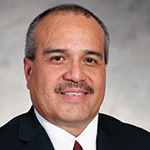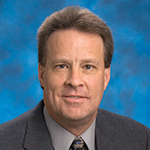Question: What wellness programs have you had the greatest success with among your employees?
 Robert Bonilla
Robert Bonilla
General Engineering Manager
Hines
Sector: Real Estate
Completing a full lighting retrofit can be one of the most effective ways for companies to reduce demand for utility energy. At Renaissance Square in downtown Phoenix, Hines completed a lighting retrofit at one of our two buildings in 2011. The retrofit, coupled with the installation of variable frequency drive units to control fans and chillers, resulted in an annual energy reduction of 700kW.
Efficient techniques reduce demand and expenses while limiting environmental impact. Ensuring that equipment is operating properly is another important step in easing usage. Hines tests the performance of chillers to better manage electrical demand.
I also recommend that businesses participate in utility providers’ energy programs. Hines participates in demand reduction programs and earned a rebate for installing the variable frequency drive units at Renaissance Square.
Most importantly, companies should talk about energy consumption with staff members. Hines’ management discusses operating costs per square foot and ways to make the insides of buildings more sustainable. Each employee plays a role in reducing the impact on the environment.
Robert Bonilla, general engineering manager at Renaissance Square, was recently named Building Engineer of the Year by the Building Owners and Managers Association of Greater Phoenix. Since Hines acquired the property in 2007, Bonilla has led Renaissance Square to six consecutive ENERGY STAR® certifications, as well as a LEED® Gold certification. In 2013, the property won BOMA of Greater Phoenix’s Kilowatt Krackdown award for having the highest reduction in kilowatt hours year after year for a building more than 500,000 square feet.

Les Hansen
Executive Director, Facilities Engineering & Sustainability
USAA
Sector: Financial Services
Reducing energy consumption at all USAA facilities has been a focus for many years. Our operations center in Phoenix achieved LEED® certification for New Construction in 2005. Adopting an aggressive approach to energy conservation in 2009, we reduced our annual electrical consumption in Phoenix by more than 30 percent — primarily through chiller plant optimization, lighting retrofits, and enhanced control of lighting and air conditioning per business needs. Subsequently, our Phoenix campus became LEED Platinum® Certified in 2011 in the Existing Buildings: Operations & Maintenance category.
Our Phoenix campus has also earned the EPA’s prestigious ENERGY STAR® rating for energy efficiency. A solar energy system produces more than 1,000 kilowatts that offsets more than 20 percent of electrical power, and USAA also purchases 25 percent of the total campus power from APS’s Green Choice Renewable Energy Program.
USAA is committed to conduct business as a responsible steward of natural resources without compromising service to our members. Our efforts have had a significant positive impact to USAA’s workplace and bottom line, the environment, and the community.
Les Hansen is executive director of Facilities Engineering and Sustainability for USAA, a diversified financial services company serving U.S. military veterans and their families. Under Hansen’s leadership, each of USAA’s six owned-and-operated offices in the U.S. achieved U.S. Green Building Council’s LEED certification. Hansen holds a Bachelor of Science in Electrical Engineering Technology from New Mexico State University and has more than 30 years’ experience in facilities management and building operations.

M. Pete He, Ph.D.
Senior Research Fellow, Sustainability
Henkel Corporation
Sector: Consumer Goods and Adhesive Technologies
Henkel works to minimize its energy consumption in multiple ways, including our product development, consumer use and locally with our LEED-certified building in Scottsdale. The building receives 75 percent of its light naturally, reuses the grey water from the laundry test labs to irrigate surrounding plants, and utilizes solar panels to support energy use. Henkel is committed to developing products that use the least amount of energy from formulation to production to consumer use, which consumes the most amount of energy. Examples that help reduce the amount of consumer energy include our laundry detergent that is just as effective in room-temperature-water washing and our foaming hand wash that reduces the amount of water and time spent lathering. We continue to support our efforts through a Sustainability Ambassador Program that was implemented in 2011. Through the program, we educate K-12 students throughout the Valley on the importance of conservation and how they can make an impact. Our goal in teaching young students is that they will adopt these habits and change their behavior while influencing their family and friends to do the same.
As Henkel’s senior research fellow, Dr. Pete He focuses on sustainability, open innovation and external partnership interests in North America, covering some of America’s most trusted consumer products, including Dial® soaps, Purex® laundry detergent and Loctite® adhesives. Dr. He serves as an industrial advisor and program leader for The Sustainability Consortium, Columbia University’s NSF Surfactant Research Center and Keep Phoenix Beautiful. Dr. He has held numerous roles within Henkel, including work in research and development, and holds more than 50 U.S. patents.
















